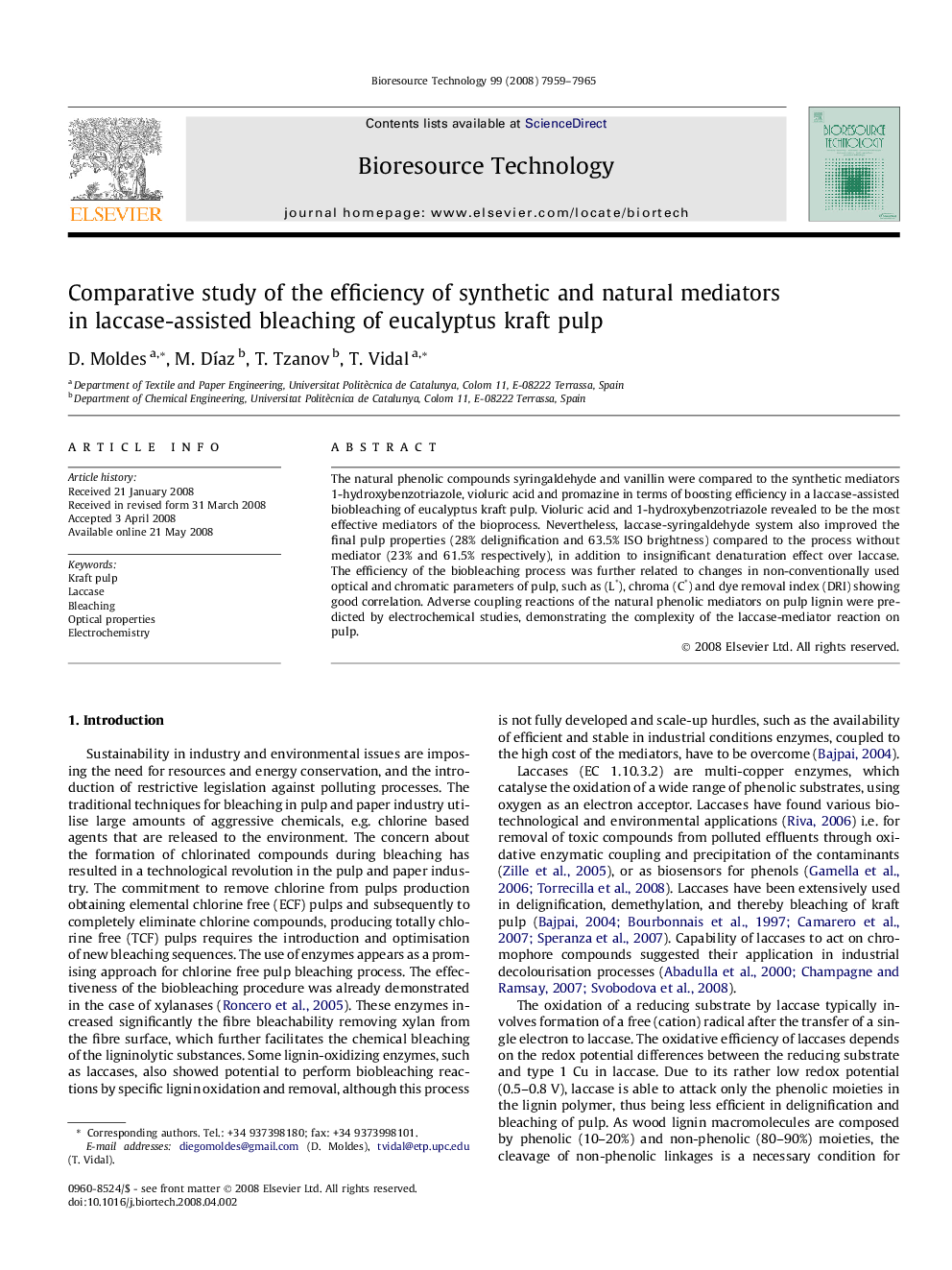| کد مقاله | کد نشریه | سال انتشار | مقاله انگلیسی | نسخه تمام متن |
|---|---|---|---|---|
| 684514 | 889023 | 2008 | 7 صفحه PDF | دانلود رایگان |

The natural phenolic compounds syringaldehyde and vanillin were compared to the synthetic mediators 1-hydroxybenzotriazole, violuric acid and promazine in terms of boosting efficiency in a laccase-assisted biobleaching of eucalyptus kraft pulp. Violuric acid and 1-hydroxybenzotriazole revealed to be the most effective mediators of the bioprocess. Nevertheless, laccase-syringaldehyde system also improved the final pulp properties (28% delignification and 63.5% ISO brightness) compared to the process without mediator (23% and 61.5% respectively), in addition to insignificant denaturation effect over laccase. The efficiency of the biobleaching process was further related to changes in non-conventionally used optical and chromatic parameters of pulp, such as (L∗), chroma (C∗) and dye removal index (DRI) showing good correlation. Adverse coupling reactions of the natural phenolic mediators on pulp lignin were predicted by electrochemical studies, demonstrating the complexity of the laccase-mediator reaction on pulp.
Journal: Bioresource Technology - Volume 99, Issue 17, November 2008, Pages 7959–7965